 When Alfonso d’Este, the Duke of Ferrara, and his wife Lucrezia Borgia, asked for a painting expressing worldly delights, drinking, and sensuality, Giovanni Bellini could not refuse the offer though he was eighty-five and in failing health. The Feast of the Gods...
When Alfonso d’Este, the Duke of Ferrara, and his wife Lucrezia Borgia, asked for a painting expressing worldly delights, drinking, and sensuality, Giovanni Bellini could not refuse the offer though he was eighty-five and in failing health. The Feast of the Gods...
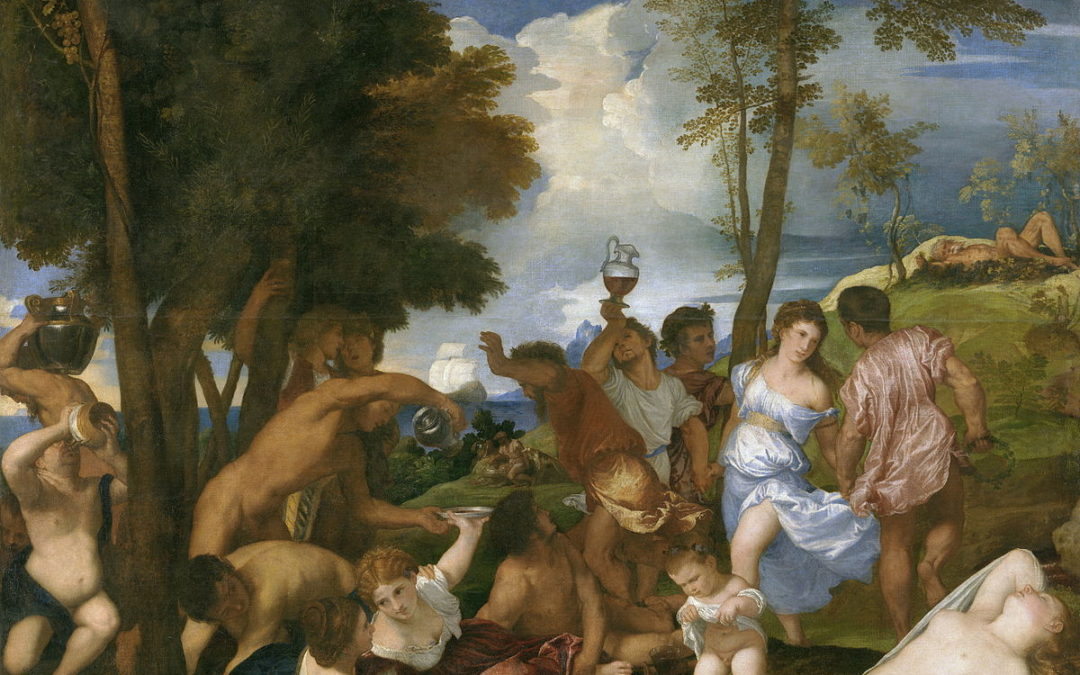 Titian’s The Bacchanal of the Andrians has the appearance of a picnic devoted to drinking. Sometimes called The Stream of Wine on the Island of Andros, it relates the miracle in which spring water is transformed into wine. In the foreground, the legend on the sheet...
Titian’s The Bacchanal of the Andrians has the appearance of a picnic devoted to drinking. Sometimes called The Stream of Wine on the Island of Andros, it relates the miracle in which spring water is transformed into wine. In the foreground, the legend on the sheet...
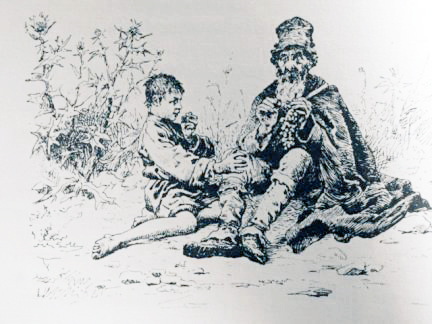 Merienda first appears in the anonymous picaresque novel The Life of Lazarillo de Tormes in 1554, * ninety-five years before the French word pique-nique in 1649. It is used to denote a snack. But when Francesco de Quevedo uses merienda in El Buscon (The Swindler), it...
Merienda first appears in the anonymous picaresque novel The Life of Lazarillo de Tormes in 1554, * ninety-five years before the French word pique-nique in 1649. It is used to denote a snack. But when Francesco de Quevedo uses merienda in El Buscon (The Swindler), it...
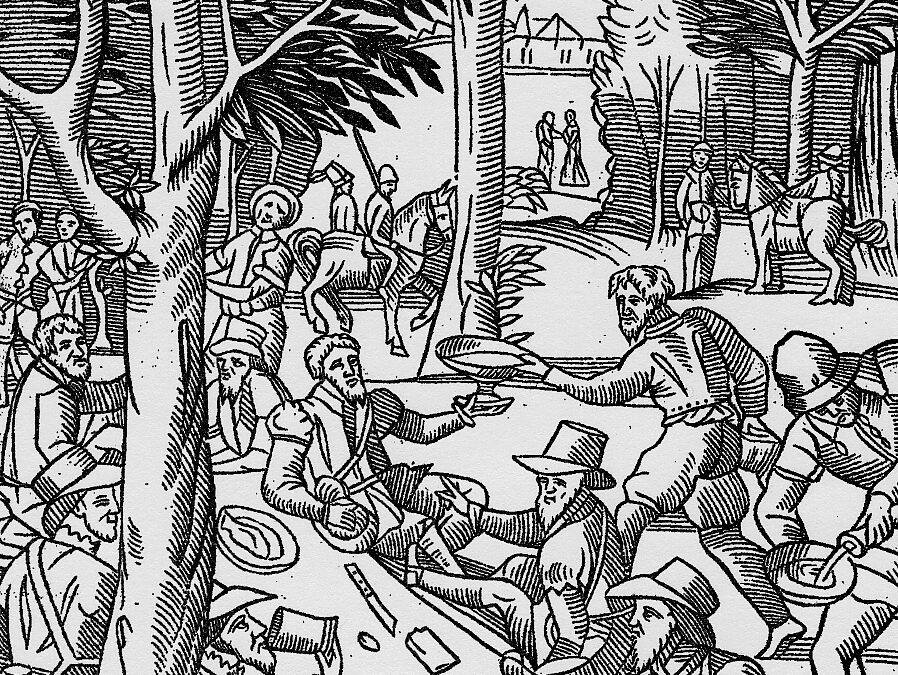 Fouilloux’s La Venerie, aka Hunting, differs from Gaston’s 1389 description (See Le livre de chasse). Accordingly, the assemblée is replaced with un repas chasse, a hunters’ lunch attended only by men. However, when George Gascoigne adapted La...
Fouilloux’s La Venerie, aka Hunting, differs from Gaston’s 1389 description (See Le livre de chasse). Accordingly, the assemblée is replaced with un repas chasse, a hunters’ lunch attended only by men. However, when George Gascoigne adapted La...
 Bruegel the Elder’s The Land of Cockaigne, aka Het Luilekkerland, makes you think it’s a picnic. Not. It’s a satirical look at Cockaigne, a mythical place where it’s always spring and never winter, in which life is all play and no work,...
Bruegel the Elder’s The Land of Cockaigne, aka Het Luilekkerland, makes you think it’s a picnic. Not. It’s a satirical look at Cockaigne, a mythical place where it’s always spring and never winter, in which life is all play and no work,...
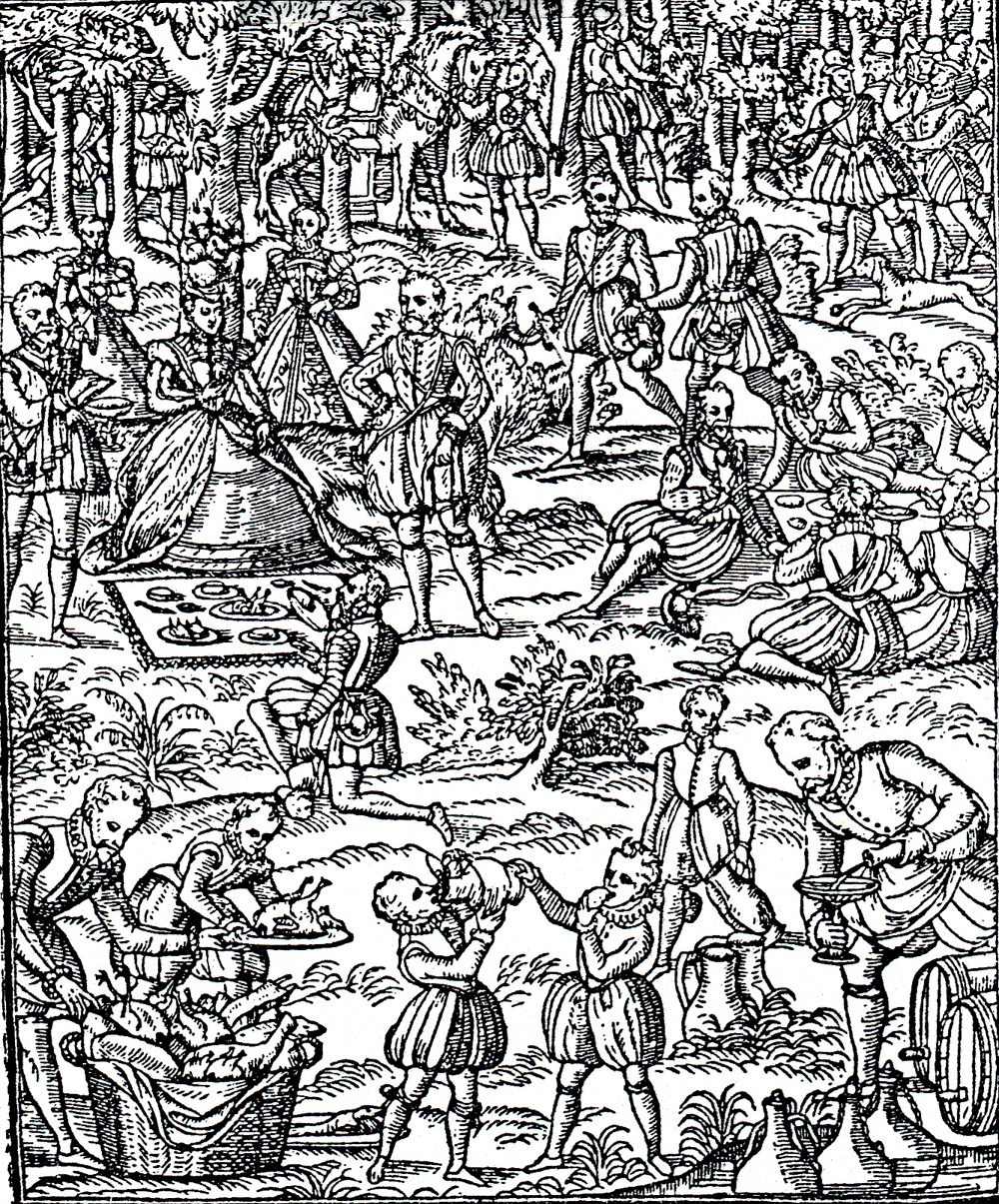 Gascoigne adapted Gaston Phébus’s The Book of the Hunt (1380) and Jacques du Fouilloux’s in La Venerie (1560) into English, retitling the work The Noble Arte of Venerie or Hunting (1575). (The book is dedicated to Lord Clinton, Elizabeth’s master of...
Gascoigne adapted Gaston Phébus’s The Book of the Hunt (1380) and Jacques du Fouilloux’s in La Venerie (1560) into English, retitling the work The Noble Arte of Venerie or Hunting (1575). (The book is dedicated to Lord Clinton, Elizabeth’s master of...
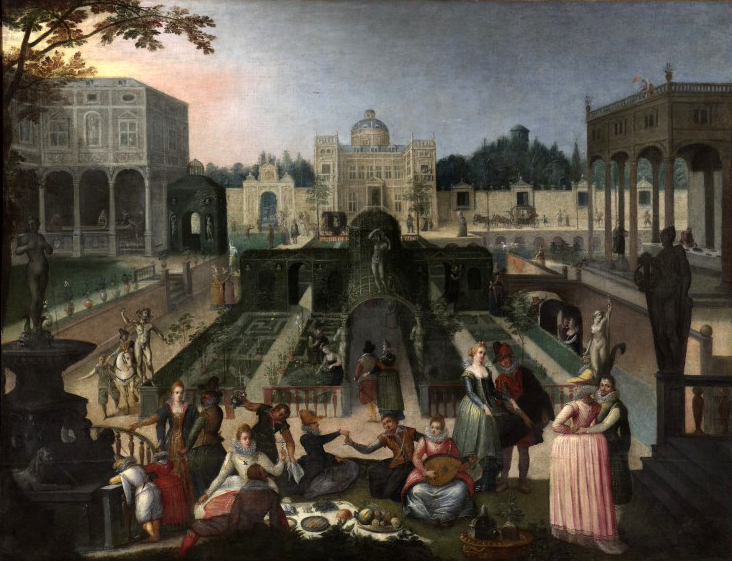 Feast In The Park Of The Duke Of Mantua or Fête dans le Jardin du Duc de Mantoue is picnicky but not a feast. The curators of the Musée des Beaux-Arts probably assign the title. It is a garden of lovers dining alfresco in an imaginary architectural setting. The...
Feast In The Park Of The Duke Of Mantua or Fête dans le Jardin du Duc de Mantoue is picnicky but not a feast. The curators of the Musée des Beaux-Arts probably assign the title. It is a garden of lovers dining alfresco in an imaginary architectural setting. The...
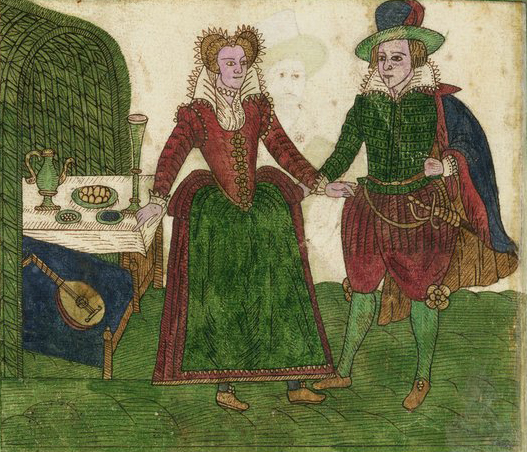 Trevelyon’s Miscellany is a meticulously illustrated compendium of 1608. It’s stocked with a calendar, scenes from the Bible, current events, court, political figures, costumes, fabric designs, games, dances, etc. It’s among the marvels of bookcraft...
Trevelyon’s Miscellany is a meticulously illustrated compendium of 1608. It’s stocked with a calendar, scenes from the Bible, current events, court, political figures, costumes, fabric designs, games, dances, etc. It’s among the marvels of bookcraft...
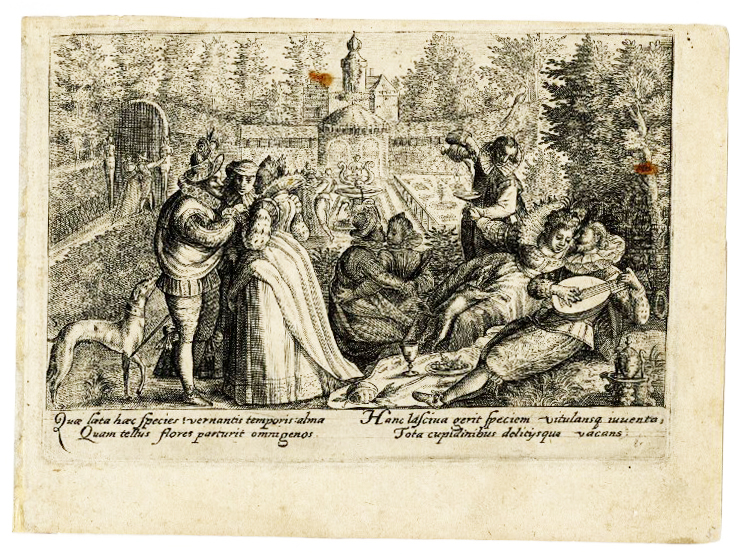 Early in the 16th century, Dutch emblem books primers or handbooks for youthful aristocrats. Among the more socially and sexually suggestive of these books are The Garden of Love [Hortus Voluptatum] (1599) and New Mirror for Youth [Nieuwen ieucht spieghel] (1617),...
Early in the 16th century, Dutch emblem books primers or handbooks for youthful aristocrats. Among the more socially and sexually suggestive of these books are The Garden of Love [Hortus Voluptatum] (1599) and New Mirror for Youth [Nieuwen ieucht spieghel] (1617),...
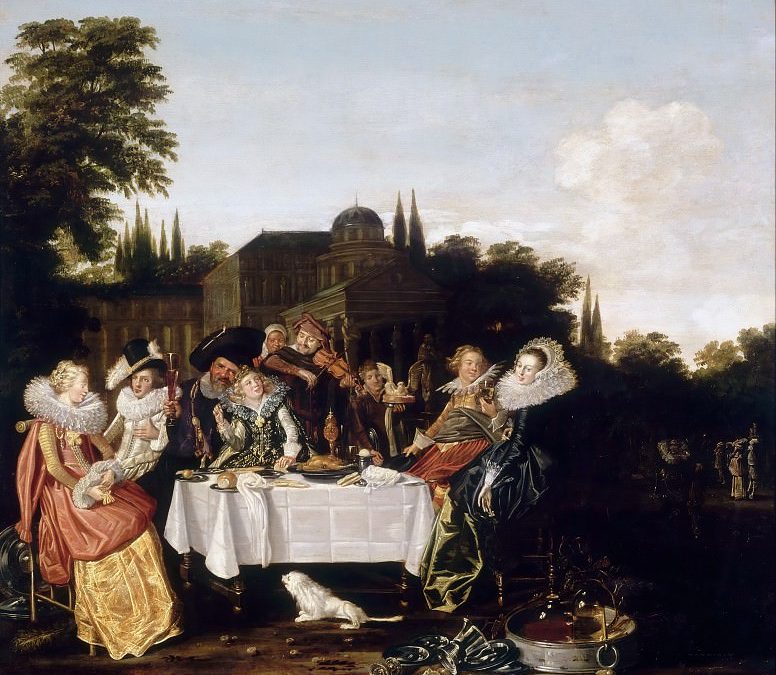 Hals’s Banquet in the Country is a portrait of an aristocratic or merchant family dining alfresco in the garden of their estate. It’s meant to display social importance, status, and wealth. This picnicking subject was one of many Hals painted. See Dirck Hals. Banquet...
Hals’s Banquet in the Country is a portrait of an aristocratic or merchant family dining alfresco in the garden of their estate. It’s meant to display social importance, status, and wealth. This picnicking subject was one of many Hals painted. See Dirck Hals. Banquet...











